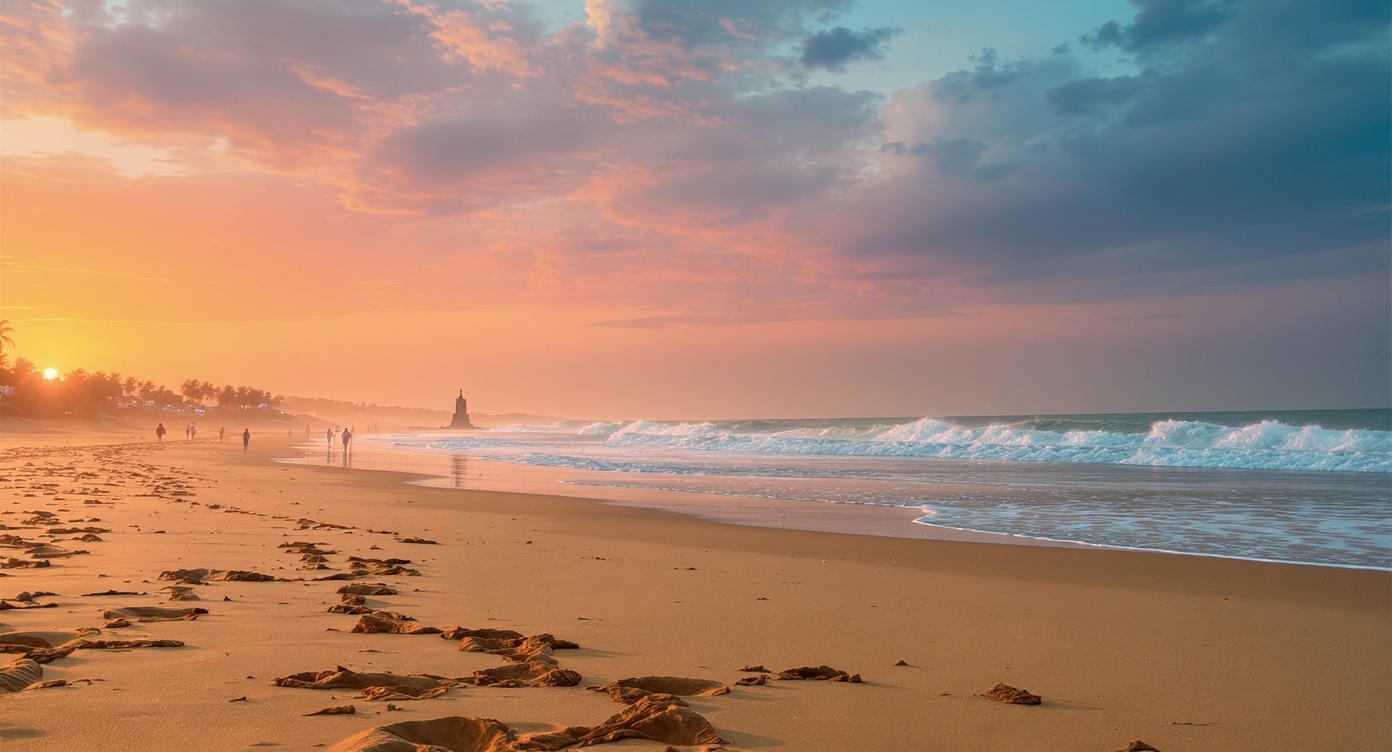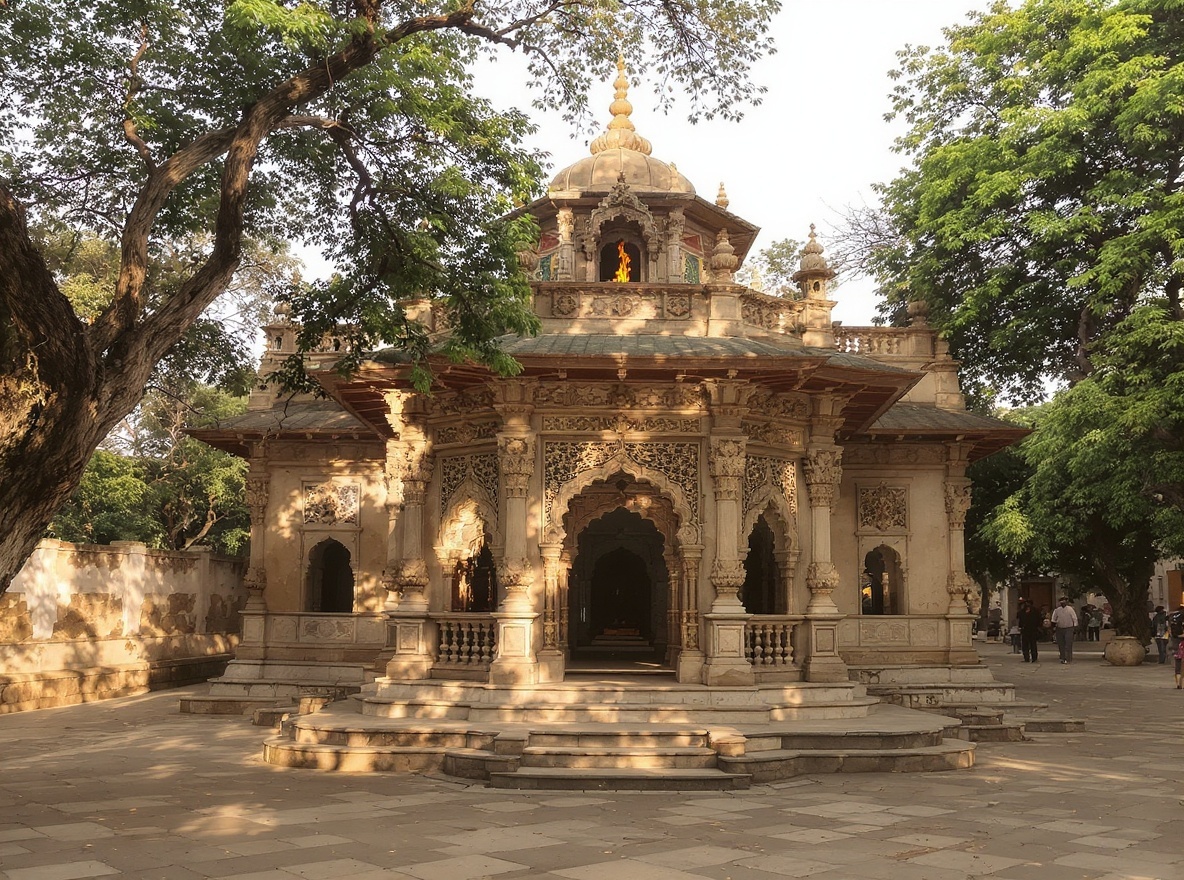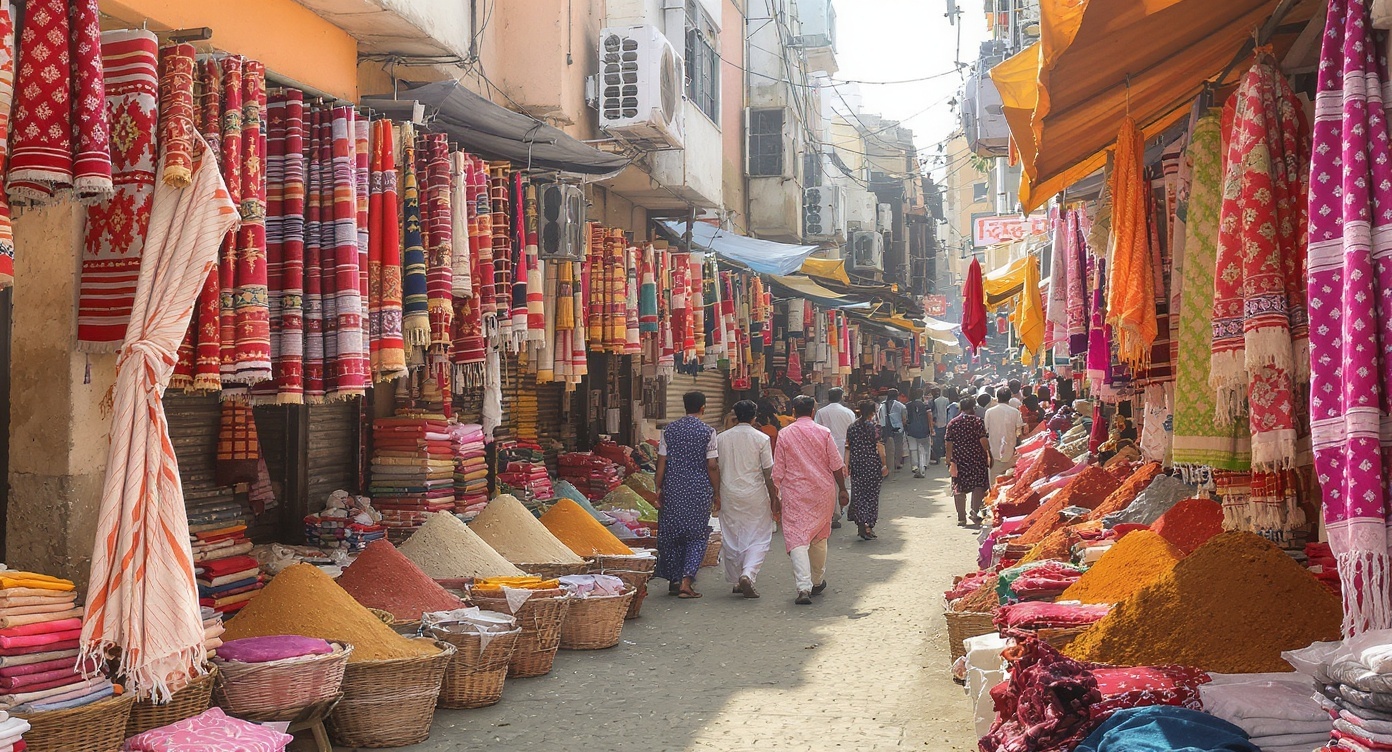Explore the Best of Navsari: Must-Visit Attractions
Navsari offers a remarkable array of attractions that showcase its rich history, cultural diversity, and natural beauty. From the historically significant Dandi Beach where Mahatma Gandhi concluded his famous Salt March, to ancient Parsi fire temples that have kept their sacred flames burning for centuries, Navsari's attractions tell stories of different eras and civilizations. This comprehensive guide will take you through the city's most significant tourist spots, helping you plan an unforgettable journey through this South Gujarat gem.
The attractions in Navsari cater to diverse interests – whether you're a history enthusiast eager to walk through colonial-era buildings, a spiritual seeker looking for peace in ancient temples, a nature lover wanting to explore coastal ecosystems, or a culture aficionado interested in understanding the unique Parsi heritage. Each site offers not just visual appeal but also deep cultural and historical significance, making your visit both educational and inspiring.
🏖️ Dandi Beach - Where History Was Made
Location: 16 km from Navsari city center
Best Time to Visit: Early morning for sunrise, evening for sunset
Entry Fee: Free
Historical Significance: End point of Gandhi's Salt March (1930)
Dandi Beach stands as one of India's most historically significant coastal sites, forever etched in the annals of the Indian independence movement. On April 6, 1930, Mahatma Gandhi arrived here after his 240-mile march from Sabarmati Ashram, picking up a handful of salt from the beach and thereby breaking the British salt law. This simple yet powerful act of civil disobedience sparked nationwide protests and became a turning point in India's struggle for independence.
Today, Dandi Beach offers visitors a unique combination of historical significance and natural beauty. The beach stretches for several kilometers along the Arabian Sea, featuring golden sands, gentle waves, and spectacular views of the sunset. The Satyagraha Memorial, erected to commemorate Gandhi's historic act, includes statues of Gandhi and his followers, murals depicting the Salt March, and informational displays that help visitors understand the significance of the events that unfolded here.
The beach itself is relatively undeveloped, maintaining its natural charm and tranquility. During low tide, visitors can walk far into the exposed seabed, discovering marine life in tidal pools and collecting shells. The beach is also a haven for birdwatchers, with various species of seabirds, including gulls, terns, and sandpipers, frequently spotted along the shoreline. Local fishermen continue their traditional practices, offering visitors glimpses of coastal life that has remained unchanged for generations.
Recent development initiatives have improved facilities at Dandi Beach while maintaining its historical character. A well-maintained pathway leads to the memorial, with gardens and seating areas for visitors to rest and reflect. The Salt Satyagraha Memorial Museum provides detailed information about the Salt March, the participants, and its impact on the freedom movement. Light and sound shows are occasionally organized to bring history to life for visitors.
🔥 Vadi Daremeher (Desai Atash Bahram) - Sacred Fire Temple
Location: Tarota Bazaar, Navsari
Established: 1765
Access: Open to Parsis only (non-Parsis can view from outside)
Significance: One of nine Atash Bahrams in the world
The Vadi Daremeher, also known as Desai Atash Bahram, is one of the most sacred Zoroastrian fire temples in the world and a cornerstone of Navsari's Parsi heritage. Established in 1765, this temple houses a consecrated fire that has been burning continuously for over 250 years, making it one of only nine Atash Bahrams (Fire Temples of the highest grade) in the world, with eight in India and one in Iran.
The temple's architecture is a masterpiece of traditional Parsi design, featuring intricate wooden carvings, beautiful stained glass windows, and detailed stonework. The building's facade showcases Persian architectural influences adapted to local conditions, creating a unique aesthetic that reflects the Parsi community's journey from Persia to India. While non-Parsis cannot enter the inner sanctum, the temple's exterior and surrounding complex offer fascinating insights into Zoroastrian culture and architectural traditions.
The temple complex includes various structures that serve the religious and social needs of the Parsi community. The baug (garden) surrounding the temple provides a peaceful environment for contemplation and community gatherings. Ancient wells within the complex, still in use, demonstrate traditional water conservation practices. The temple's library houses rare manuscripts and religious texts, preserving centuries of Zoroastrian knowledge and tradition.
🏛️ Sayaji Vaibhav Public Library - Temple of Knowledge
Location: Station Road, Navsari
Established: 1870
Collection: Over 500,000 books and manuscripts
Timings: 10:00 AM - 8:00 PM (Closed on Sundays)
The Sayaji Vaibhav Public Library stands as one of Gujarat's oldest and most prestigious libraries, serving as a beacon of knowledge and learning for over 150 years. Established in 1870 by Sayajirao Gaekwad III, the Maharaja of Baroda, this magnificent institution houses an extraordinary collection of books, manuscripts, and periodicals in various languages including Gujarati, English, Hindi, Sanskrit, and Persian.
The library building itself is an architectural gem, showcasing Indo-Saracenic style with high ceilings, arched windows, and spacious reading halls that create an atmosphere conducive to study and contemplation. The rare books section contains manuscripts dating back several centuries, including palm leaf manuscripts, illustrated texts, and first editions of important literary works. Researchers and scholars from across India visit the library to access these unique resources.
Beyond its role as a repository of books, the library serves as a cultural center, organizing lectures, book exhibitions, and literary events throughout the year. The children's section encourages young readers with its colorful collection and regular storytelling sessions. The library's digital initiative has made many rare texts accessible online, ensuring that this treasure trove of knowledge reaches a global audience.
🌳 Jamshed Baug - Green Oasis
Location: Lunsikui area, Navsari
Area: 15 acres
Features: Walking trails, children's play area, botanical specimens
Entry: Free
Jamshed Baug is Navsari's premier public garden, offering residents and visitors a tranquil escape from urban life. This beautifully landscaped park, spread over 15 acres, features mature trees, flowering plants, manicured lawns, and walking paths that make it perfect for morning walks, evening strolls, or peaceful contemplation. The garden was established by the Parsi community as a gift to the city, reflecting their tradition of philanthropy and public service.
The botanical diversity of Jamshed Baug is impressive, with native and exotic species creating a rich ecosystem within the city. Ancient trees provide shade and habitat for various bird species, making the garden a favorite spot for birdwatchers. Seasonal flowers add splashes of color throughout the year, with the garden being particularly beautiful during spring when many plants are in bloom.
Modern amenities have been added while maintaining the garden's natural character. A children's play area with safe equipment provides entertainment for young visitors. Exercise stations along the walking paths encourage fitness activities. Benches strategically placed throughout the garden offer spots for rest and reflection. The garden also hosts cultural events, yoga sessions, and environmental awareness programs.
🕌 First Dargah of Hazrat Sayyed Sadaat - Spiritual Heritage
Location: Old City, Navsari
Historical Period: 13th Century
Significance: Important Sufi shrine
Annual Urs: Attracts thousands of devotees
The First Dargah of Hazrat Sayyed Sadaat represents Navsari's Islamic heritage and the city's long tradition of Sufi spirituality. This 13th-century shrine is dedicated to a revered Sufi saint whose teachings emphasized love, tolerance, and spiritual enlightenment. The dargah attracts devotees from all faiths, reflecting the syncretic religious traditions of Navsari where different communities have coexisted peacefully for centuries.
The architecture of the dargah combines Islamic and local architectural styles, featuring a dome, minarets, and intricate calligraphy. The inner sanctum houses the saint's tomb, covered with a richly embroidered chaddar (cloth covering) that is changed during special ceremonies. The courtyard provides space for prayers and gatherings, with separate areas for men and women according to traditional customs.
The annual Urs (death anniversary celebration) transforms the dargah into a vibrant spiritual and cultural festival. Qawwali performances, religious discourses, and communal meals (langar) create an atmosphere of devotion and celebration. The tradition of offering chadar and flowers at the shrine continues, with many believers attributing miraculous healings and wish fulfillments to the saint's blessings.
🏛️ Meherjirana Library - Parsi Cultural Center
Location: Tarota Bazaar
Established: 1859
Specialization: Zoroastrian texts and Parsi history
Architecture: Traditional Parsi style
The Meherjirana Library stands as a testament to the Parsi community's commitment to education and knowledge preservation. Established in 1859, this historic library specializes in Zoroastrian religious texts, Parsi history, and Persian literature, making it an invaluable resource for researchers studying Parsi culture and Zoroastrianism. The library's collection includes rare manuscripts, some written in ancient Avestan script, providing insights into one of the world's oldest monotheistic religions.
The building itself is a fine example of traditional Parsi architecture, with high ceilings, wooden furnishings, and large windows that provide natural lighting. The reading room, with its original furniture and fixtures, transports visitors to the colonial era when such institutions served as centers of intellectual discourse. Portraits of prominent Parsi philanthropists and scholars adorn the walls, reminding visitors of the community's contributions to education and society.
🌊 Purna River Waterfront - Riverside Serenity
Location: Multiple access points throughout the city
Best Spots: Dudhia Talav area, Vegetable Market bridge
Activities: Morning walks, bird watching, photography
Development: Ongoing riverfront beautification project
The Purna River, Navsari's lifeline since ancient times, offers several scenic spots along its banks where visitors can experience the natural beauty and observe daily life along the river. The riverfront has been the center of economic and social activity for centuries, with ghats (steps leading to the water) serving various purposes from religious rituals to everyday activities like washing and fishing.
Recent riverfront development projects have created promenades and gardens along certain stretches, making them accessible for leisure activities. Early morning visits offer opportunities to observe various bird species, including kingfishers, herons, and egrets, that inhabit the riverine ecosystem. The old bridges crossing the Purna provide excellent vantage points for photography, especially during sunset when the river reflects the golden light.
The vegetable market area along the river presents a colorful spectacle of commercial activity, with boats bringing fresh produce from nearby farms. This traditional mode of transport and commerce continues despite modernization, offering visitors authentic glimpses of riverine trade that has sustained Navsari for generations.
🏛️ Navsari Twin City - Modern Development
Location: 3 km from main city
Features: Planned township, modern amenities
Attractions: Parks, shopping complexes, sports facilities
Significance: Model for urban planning
Navsari Twin City represents the modern face of Navsari, showcasing planned urban development that balances residential, commercial, and recreational spaces. This satellite township, developed to ease congestion in the old city, features wide roads, underground utilities, and green spaces that make it a model for sustainable urban development. The contrast between the historic old city and this modern development offers visitors insights into Navsari's evolution.
The township includes several parks and recreational facilities that have become popular gathering spots for families. Modern shopping complexes offer a mix of local and national brands, while restaurants serve both traditional Gujarati cuisine and international dishes. Sports facilities including cricket grounds, tennis courts, and swimming pools cater to fitness enthusiasts and provide venues for tournaments and events.
🎭 Parsi Natak Mandali - Cultural Heritage
Location: Tarota Road
Established: Late 19th century
Significance: Pioneer of Gujarati theater
Current Status: Heritage building, occasional performances
The Parsi Natak Mandali building stands as a monument to Navsari's rich theatrical tradition. This historic venue was once the epicenter of Gujarati theater, where pioneering plays were performed and theatrical traditions were established that influenced drama across Gujarat. Though regular performances are less frequent now, the building itself tells the story of a vibrant cultural past when theater was a primary form of entertainment and social commentary.
The architecture of the building reflects the theatrical grandeur of its era, with a proscenium stage, tiered seating, and acoustic design that required no amplification. Original posters and photographs displayed in the building chronicle the history of Parsi theater, including famous plays, actors, and playwrights who contributed to this art form. Efforts are underway to revive regular performances and establish a theater museum that would preserve and showcase this cultural heritage.
🏛️ Collector's Office and Colonial Buildings
Location: Administrative area
Period: British colonial era
Architecture: Indo-Saracenic style
Current Use: Government offices
The colonial-era administrative buildings in Navsari, including the Collector's Office, showcase the architectural legacy of British rule. These structures, built in the Indo-Saracenic style, combine Islamic, Hindu, and British architectural elements, creating a unique aesthetic that characterizes many government buildings from this period. High ceilings, verandahs, arched windows, and ornate facades make these buildings architecturally significant.
Walking tours of the colonial district offer insights into the administrative history of Navsari and the role it played during British rule. Many buildings continue to serve their original administrative functions, allowing visitors to observe the continuity of governance structures. The architecture photography opportunities these buildings provide attract enthusiasts interested in colonial heritage.
🌺 Dudhia Talav - Historic Water Body
Location: Central Navsari
Historical Significance: Ancient water reservoir
Current Status: Undergoing restoration
Surroundings: Temples and heritage structures
Dudhia Talav (Milk Lake) is one of Navsari's historic water bodies, with legends suggesting its name comes from its milky white appearance during certain times of the year. This ancient reservoir served as a crucial water source for the city and continues to hold religious and cultural significance. Several temples around the talav create a spiritual atmosphere, with devotees performing rituals and celebrations during festivals.
The area around Dudhia Talav represents old Navsari's traditional urban planning, where water bodies were central to community life. Heritage buildings surrounding the talav showcase various architectural styles, from traditional Gujarati homes to colonial-period structures. Restoration efforts aim to revive the talav's ecological health while preserving its historical character.
🎪 Local Markets and Bazaars
Main Markets: Tarota Bazaar, Vegetable Market, Cloth Market
Specialties: Traditional crafts, textiles, jewelry
Best Time: Morning for fresh produce, evening for shopping
Experience: Authentic local commerce and culture
Navsari's traditional markets offer immersive cultural experiences where visitors can observe and participate in centuries-old trading traditions. Tarota Bazaar, the oldest market, features narrow lanes lined with shops selling everything from spices and textiles to traditional jewelry and religious items. The sensory experience of colors, sounds, and aromas creates lasting memories for visitors.
The Vegetable Market near the river presents a spectacular display of fresh produce from surrounding farms. Early morning visits reveal the supply chain that feeds the city, with farmers bringing their harvest, wholesale traders negotiating prices, and retailers preparing for the day's sales. The cloth market showcases traditional Gujarati textiles including bandhani, block prints, and embroidered fabrics.
🏛️ Educational Institutions with Heritage Value
Several educational institutions in Navsari have heritage value beyond their academic significance. The J.N. Tata Parsi Girls' High School, established in 1859, was pioneering in women's education. The Navsari Cotton College, with its colonial-era buildings, represents the agricultural education heritage. These institutions welcome visitors interested in educational history and often have museums or archives showcasing their legacy.
🌿 Ecological Sites and Nature Spots
Beyond the main attractions, Navsari offers several ecological sites worth exploring. The mangrove areas near the coast provide opportunities for nature walks and bird watching. Small groves and gardens throughout the city serve as green lungs and biodiversity spots. The agricultural areas surrounding Navsari, particularly the chickoo orchards and mango farms, offer agro-tourism experiences during harvest seasons.
Planning Your Sightseeing in Navsari
Suggested Itinerary:
- Day 1: Historic sites - Dandi Beach, Salt Satyagraha Memorial
- Day 2: Religious sites - Vadi Daremeher, First Dargah, temples
- Day 3: Cultural sites - Libraries, colonial buildings, markets
- Day 4: Nature and leisure - River front, gardens, Twin City
Travel Tips:
- Start early to avoid heat and crowds
- Dress modestly when visiting religious sites
- Carry water and sun protection
- Hire local guides for historical insights
- Try local food at market areas
- Respect photography restrictions at religious sites
Seasonal Attractions and Events
Navsari's attractions take on different characters during various seasons and festivals. During Navratri, temples become vibrant centers of celebration with garba and cultural programs. The monsoon season transforms gardens and the riverfront into lush green spaces. Winter months offer the best weather for extensive sightseeing, with many outdoor events and festivals organized during this period.
The mango season (April-June) adds a special dimension to visits, with mango festivals, orchard tours, and fresh fruit available everywhere. The chickoo season (December-March) similarly offers unique experiences. Bird migration seasons bring various species to wetlands and river areas, attracting birdwatchers and nature photographers.
Hidden Gems and Off-the-Beaten-Path Sites
Beyond the main attractions, Navsari has numerous hidden gems waiting to be discovered. Old havelis in the traditional quarters showcase residential architecture from different periods. Small neighborhood temples, some centuries old, offer intimate spiritual experiences. Traditional craftsmen's workshops where visitors can observe artisans at work provide authentic cultural encounters.
The old cemetery areas, both Parsi and Christian, contain historical graves and monuments that tell stories of prominent citizens from past centuries. Ancient wells, some with architectural significance, dot the old city. These lesser-known sites offer opportunities for discovery and photography away from crowds.
Photo Gallery



